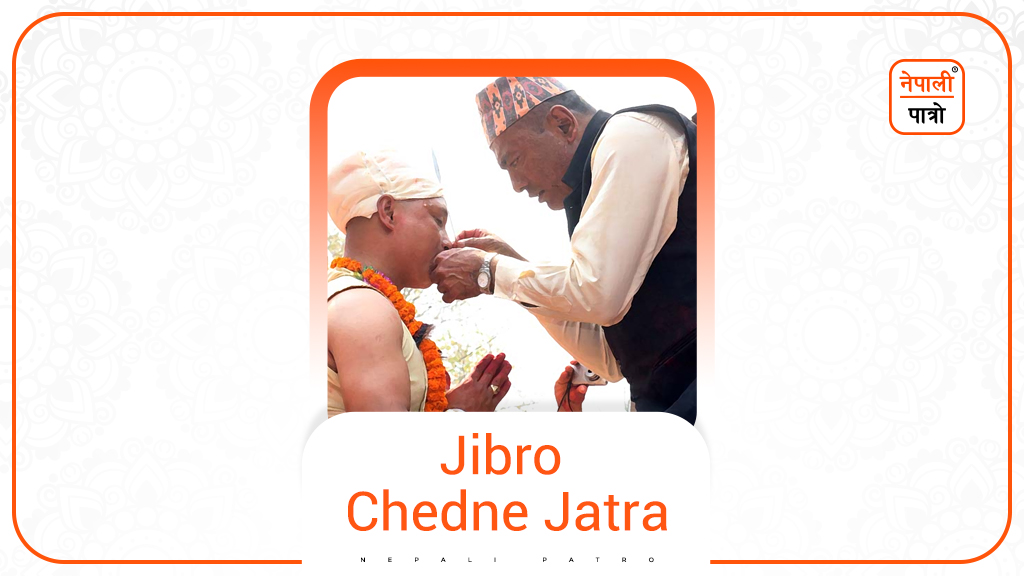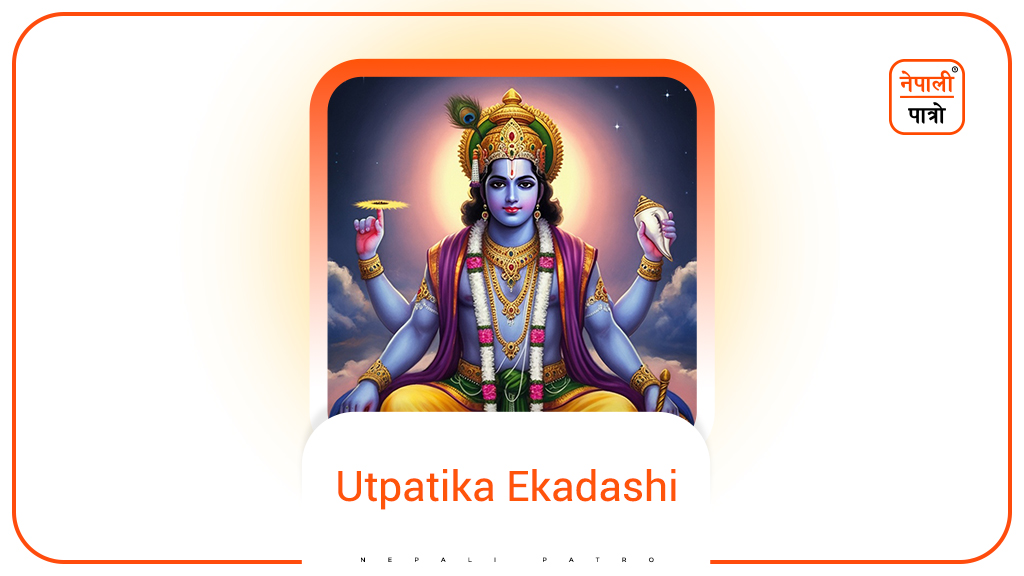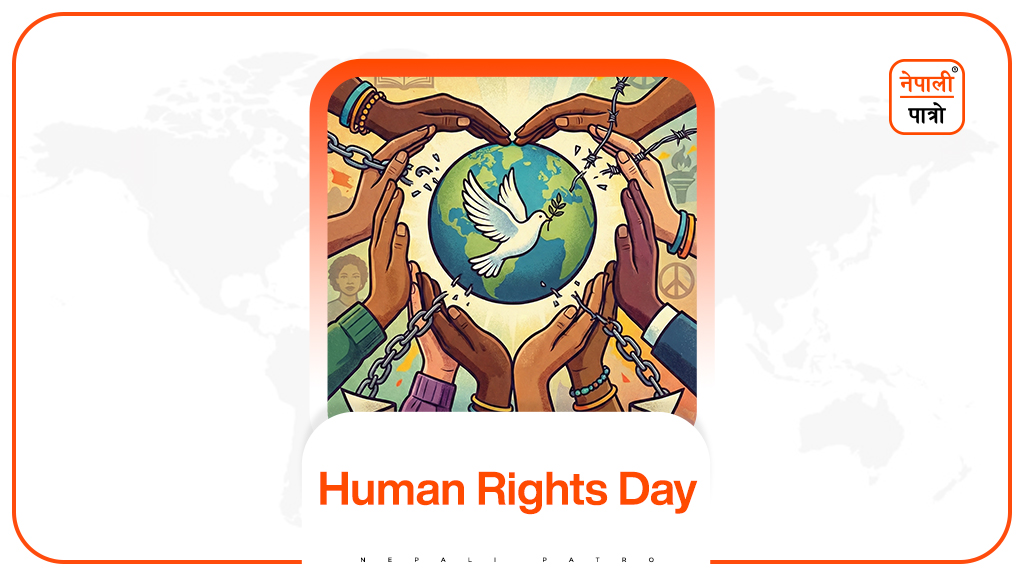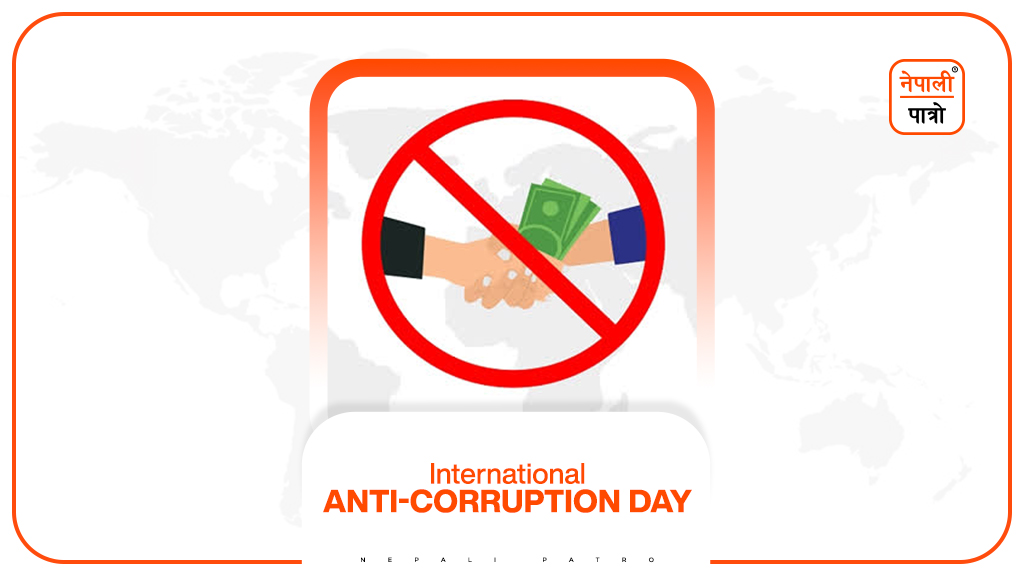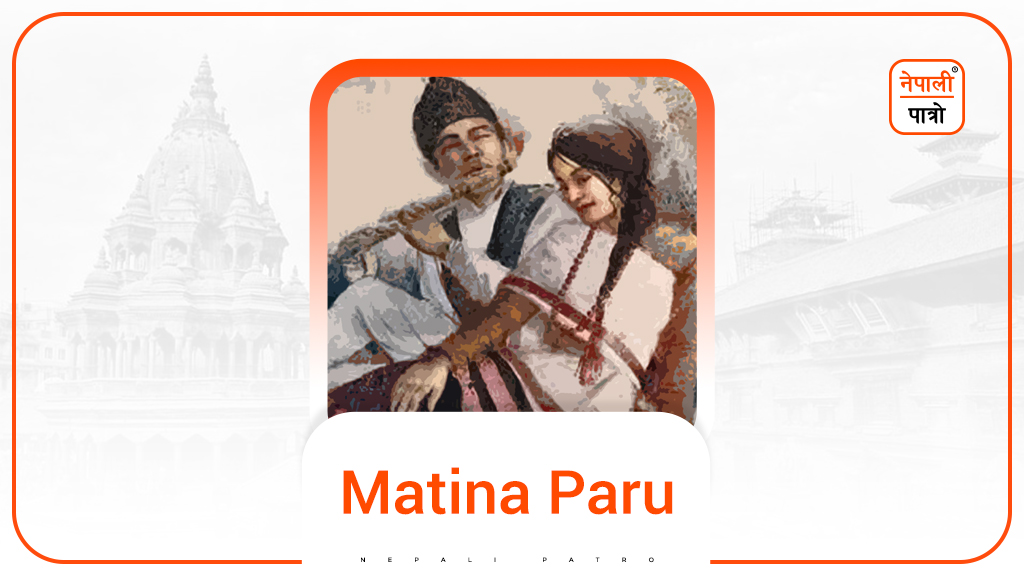Jibro Chedne Jatra
By
Nepali Patro
In the context of the Biska Jatra, the Jibro Chedne Jatra (Tongue-Piercing Festival) celebrated in Bode, Bhaktapur, is one of Nepal’s most unique, daring, and historic festivals. It begins on the last day of the month of Chaitra and is observed on the 2nd of Baisakh each year.
Beginning and Rituals of the Festival
The festival begins with the raising of a ceremonial pole (lingo) in front of the Mahalaxmi Temple. Then, on the 2nd of Baisakh, a man who has undertaken a special vow pierces his tongue with a one-foot-long iron needle in the courtyard of the Mahalaxmi Temple and walks around the temple.
The iron needle is soaked in mustard oil for a month beforehand. The participant observes a two-day fast, consuming only water, and completes the tongue-piercing ritual on the third day. A small lamp is hung from the pierced tongue, and a procession around the town takes place. After the festival concludes, the needle is removed, and the wound is treated with the soil from the Mahalaxmi Temple, which is believed to heal it.
Two Major Legends Associated with the Tongue-Piercing Festival
1. The Tale of the Khyak, the Tantric, and Nil Barahi
It is said that spirits, ghosts, and demons, including Khyaks (a type of supernatural being), used to dwell around the Nil Barahi Temple located in Dharmapur near Bode. These beings would sometimes help farmers if the goddess Nil Barahi was pleased through worship. However, if Nil Barahi was not pleased, they would trouble people. When the locals failed to appease Nil Barahi, the beings began causing great suffering, forcing the villagers to migrate from Dharmapur to Bode.
However, the troubles followed them to Bode as well. To counter this, a Tantric named Bhimdutta Karmacharya from Deupatan used his powers to create a protective boundary around the village. One day, a Khyak disguised as a human got caught in his magical trap. In anger, the villagers beat him and pierced his tongue with an iron spike. The Khyak promised never to harm anyone again, and for the next seven years, the festival was observed by piercing his tongue.
However, Nil Barahi grew angry at the punishment given to her followers, and her other followers started causing havoc in the village. The villagers again summoned Tantric Bhimdutta. That night, he had a dream in which Nil Barahi told him to apologize for mistreating her followers and declared that from then on, humans themselves could participate in the tongue-piercing as a form of devotion. After performing a ritual of forgiveness, the village continued piercing the khyak’s tongue for seven years, after which a local human took up the tradition.
2. The Form of Bhairav and the Beginning of the Festival
It is said that there were no human settlements in Bode in the past. People from Dharmapur wanted to migrate to Bode due to the terror of spirits and Khyaks, but no one dared to do so. Their terror increased at night, prompting the village youth to patrol the area.
On the last night of Chaitra, the villagers saw a large figure with a torch in hand descending from the Bode hill. The figure disappeared upon reaching the Mahalaxmi Temple. When the same thing happened the next night, the villagers followed the figure to the Kalika Temple, but it vanished again. The figure, with a massive head, black tongue, and a giant body, was believed to be the god, Bhairav.
From that day on, the Mahalaxmi Temple was considered a sacred site of Bhairav. To symbolize Bhairav during the festival, a person would stick out their tongue and participate in a ritual procession. As it was difficult to keep the tongue extended for long periods, piercing it with a needle became customary. Since then, the fear of spirits diminished, agriculture flourished, and the tradition continued.
